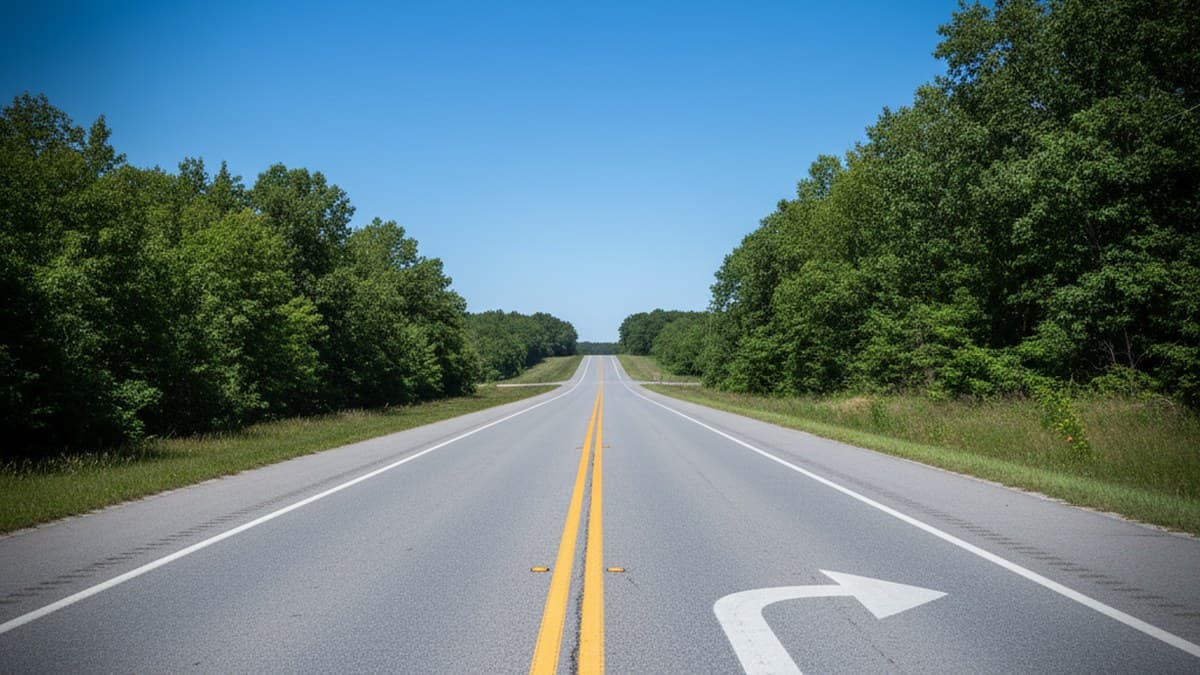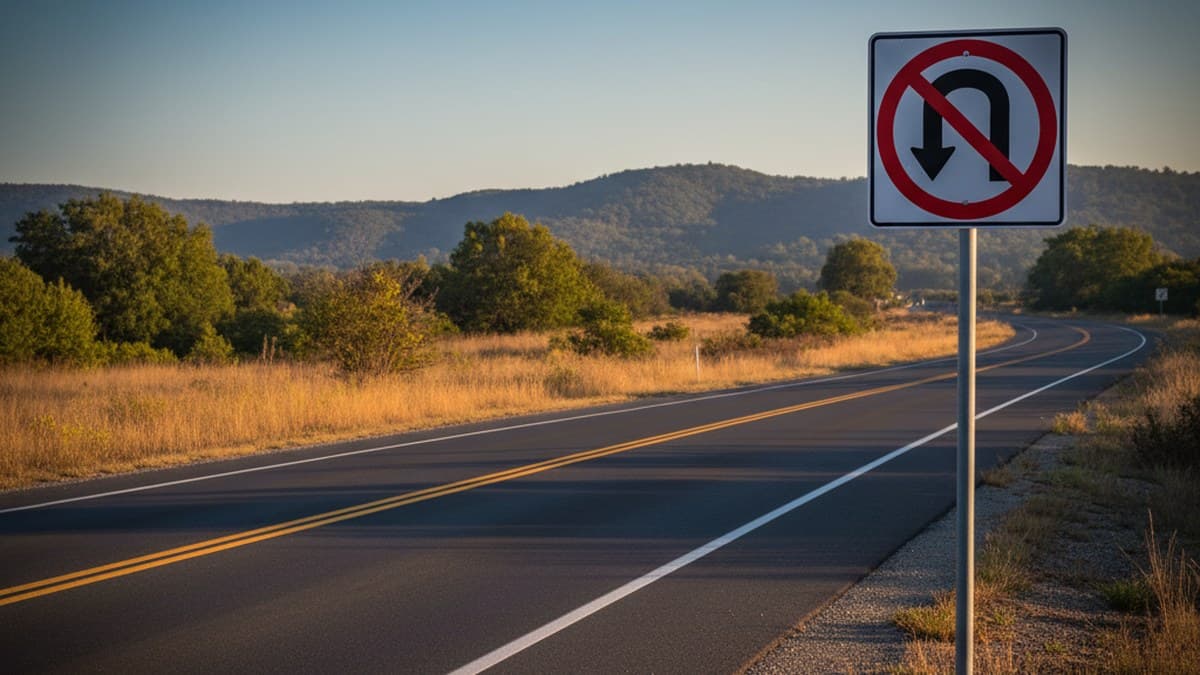U-turn Across Double Yellow

States that allow a U-turn across double yellow conditionally
Several states permit U-turns where they can be made safely and without interfering with traffic. Allowance is conditional—visibility, distance, location type, and posted signs all matter.
Visibility and minimum distance requirements
Most "allowed" states require a clear view and adequate stopping distance for oncoming traffic (e.g., hundreds of feet on rural highways). If you cannot see far enough ahead, do not U-turn.
Crest of a hill, curves, and school zones
U-turns near a hill crest or sharp curve are typically prohibited due to sight-distance limits. School-zone rules and time windows may also restrict turning movements even where centerlines would allow them.
Posted "NO U-TURN" overrides centerlines
Signs control. A posted NO U-TURN (R3-4 series or local variant) always overrides the centerline pattern.
Typical citation language for illegal U-turns
Citations often read "unsafe U-turn," "U-turn where prohibited," or "failed to yield when executing U-turn." Officers typically note sight distance, speed/volume, and conflicting movements.
Where a U-turn across double yellow is not permitted
Many states treat a U-turn across a double solid yellow the same as crossing to pass—prohibited except where a lawful left-turn or designated opening is provided. Urban arterials and divided roadways frequently ban mid-block U-turns.
